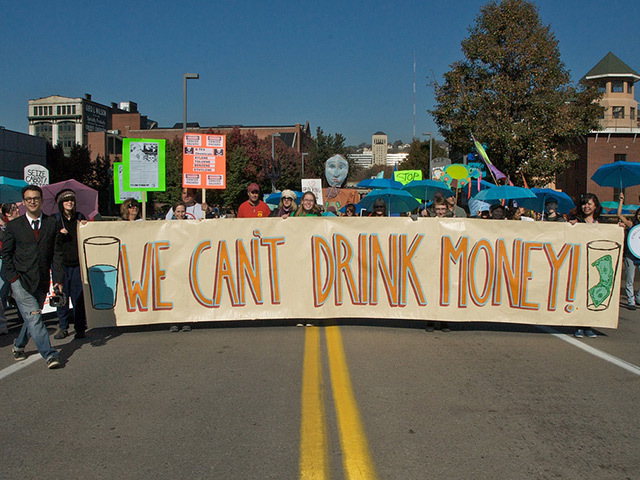
Two new investigations into whether or not fracking shales to produce gas can lead to water supplies pollution appear to take opposite sides.
While researchers at the US Department of Energy’s National Energy Technology Laboratory are reported to be saying that their work at a western Pennsylvania drilling site suggests there is nothing to worry about, a team at Duke University say they have detected methane in water supplies near well fracking operations.
NETL geologist Richard Hammack told the Associated Press that, after a year of monitoring, researchers found that the injected water additives used during fracking operations to enhance production remained thousands of feet/metres below the shallower areas that supply drinking water.
Drilling fluids tagged with unique markers were injected more than 2,438m (8,000ft) below the surface but were not detected in a monitoring zone 914m (3,000ft) higher.
That means the potentially dangerous substances stayed about a mile away from drinking water supplies.
The shale gas boom has led to tens of thousands of new short-life production wells being drilled over the past five or so years, many in the Marcellus Shale formation that underlies regions of Pennsylvania, New York, Ohio and West Virginia.
The mix of chemicals employed in fracking fluids varies according to company and region. And some are regarded as toxic.
The NETL work marks the first time that a drilling company has allowed government scientists to inject tracers into fracking fluids and then continue regular monitoring to see whether it spread toward drinking water sources.
The research is being carried out at a drilling site in Greene County, which is south-west of Pittsburgh and adjacent to West Virginia.
Eight Marcellus Shale wells were monitored seismically and one was injected with four different man-made tracers at different stages of the fracking process, which involves setting off small explosions to break the rock apart.
NETL’s scientists also monitored a separate series of older gas wells that are about 900m (3,000ft nominal) above the Marcellus to see if the fracking fluid penetrated through to them.
The industry and many US state and federal regulators have long contended that fracking itself won’t contaminate surface drinking water because of the depth to which the wells are drilled… typically 1.6km (one mile), compared with drinking water aquifers typically located within 150-300m (500-1,000ft) of the surface.
A spokesman for NETL said only that: “We are still in the early stages of collecting, analysing, and validating data from this site.
“While nothing of concern has been found thus far, the results are far too preliminary to make any claims. We expect a report on the results by the end of the calendar year.”
Meanwhile, a team at Duke University has been examining the issue from a different angle… methane contamination of water supplies in proximity to shale gas operations. Moreover, the NETL work has been watched closely by team member, scientist Rob Jackson.
He warned that, while the lack of contamination was encouraging, he wondered whether the unidentified drilling company might have consciously or unconsciously taken extra care with the research site, since it was being watched.
Jackson said too that other aspects of the drilling process can cause pollution, such as poor well construction, surface spills of chemicals and wastewater.
According to the Duke work, household drinking water that comes from wells near known fracking sites contains levels of methane six times greater than the norm elsewhere.
The team sampled drinking water from 141 wells across north-eastern Pennsylvania and southern New York and determined that the concentration of methane, the main component of natural gas, is much higher when those wells are within 1km of a fracking site.
“It is looking like we are seeing a problem with well construction in some places and not others,” wrote Jackson, who is the lead author of a Duke report about the issue.
“Poor casing and cementing problems are the simplest explanation of what we found.
“We need to understand why, in some cases, shale gas extraction contaminates groundwater and how to keep it from happening elsewhere,” the researchers wrote.
Jackson and his team determined that 82% of the 141 water wells tested had elevated levels of methane, with other additives appearing in unusually high numbers as well.
In addition to finding methane concentrations at around six times the usual level, Jackson also found ethane concentrations 23 times higher in drinking water at homes near fracking sites. In ten of the sites located within 1km of a drilling, propane was detected in 10 separate water samples.
US pressure group, the Natural Resources Defence Council said: “Make no mistake, this study does not alleviate concerns about the very real threat fracking poses to our drinking water supplies.
“The reason for that is two-fold. First, no single study can prove that fracking doesn’t cause water contamination. Second, water contamination can happen at a number of different stages in a fracking operation.”